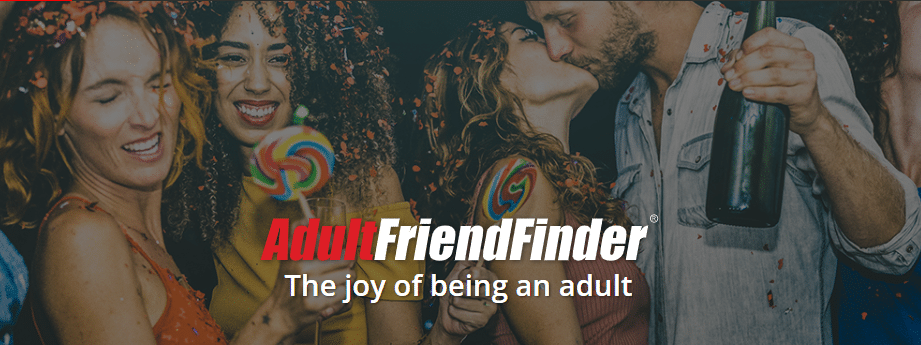Attachment Styles in Dating: Why You Keep Repeating the Same Mistakes

Have you ever found yourself stuck in the same kind of relationship over and over again—different face, same heartbreak? You tell yourself you’ll choose better next time, but somehow, the patterns repeat. The highs and lows, the chasing, the withdrawing—it’s like déjà vu with different players. The culprit? More often than not, it’s your attachment style.
Understanding attachment styles in dating is one of the most powerful tools you can have in breaking harmful cycles and building healthier connections. These psychological blueprints, often formed in early childhood, shape how we relate to love, trust, intimacy, and even conflict. They explain why some people cling, why others push away, and why the secure types seem to navigate romance with far less drama.
The goal isn’t to pathologize yourself—it’s to become aware. Because once you understand your attachment style, you can stop blaming bad luck or “just having a type.” You’ll see why you’re drawn to certain people, why you react the way you do, and how to stop sabotaging your shot at a stable, fulfilling relationship.
This article explores the major attachment styles in dating—what they look like, where they come from, and how to break the cycle once and for all.
What Are Attachment Styles? A Quick Primer
Attachment theory, first developed by psychologist John Bowlby, suggests that our early interactions with caregivers shape our expectations for love and connection throughout life. In dating, these early templates manifest as attachment styles—internal blueprints that influence how we bond, trust, and respond to intimacy.
There are four main types: secure, anxious, avoidant, and fearful-avoidant (also known as disorganized). Each style carries its own emotional habits, communication patterns, and ways of relating. And while not everyone fits neatly into one box, most people lean strongly toward one primary attachment pattern.
Secure individuals feel comfortable with closeness and independence. Anxious types crave intimacy but fear abandonment. Avoidant people value autonomy and tend to withdraw when things get too emotionally intense. Fearful-avoidant individuals want love but fear getting hurt, often vacillating between pushing people away and pulling them back in.
These patterns may seem abstract, but they play out in very real ways: Who you’re drawn to. How you argue. When you ghost. Why you panic when someone pulls away.
Understanding attachment styles in dating isn’t about assigning blame—it’s about gaining clarity. Because when you see the invisible patterns, you finally have the power to change them.
Anxious Attachment: The Fear of Being Left Behind
People with an anxious attachment style often experience dating as an emotional rollercoaster. They crave closeness, intimacy, and reassurance—but they also live in constant fear that it’s all going to be taken away.
Text messages become lifelines. Silence feels like rejection. A delayed reply can spiral into a storm of insecurity. And because of that fear, anxious types often overfunction in relationships: chasing, overcommunicating, people-pleasing, or trying to “fix” problems that may not even exist.
Dating someone with an anxious attachment style can be intense. They tend to fall fast and invest early. But underneath the passion is a fear of abandonment that colors every interaction. They may interpret neutral behaviors as signs of disinterest and become hypervigilant for signs they’re about to be left.
This isn’t neediness—it’s survival mode. Often, anxious individuals learned early on that love was inconsistent. Maybe they had a caregiver who was sometimes nurturing and sometimes distant. So now, in adulthood, they’re constantly scanning for signs of withdrawal and doing whatever it takes to hold love close.
The irony? This constant anxiety can push people away—especially avoidant types, who may see it as “too much.” Breaking the cycle means learning to self-soothe, communicate clearly, and trust that love isn’t something you have to chase to keep.
Avoidant Attachment: The Push-Pull of Intimacy
If anxious attachment is about clinging, avoidant attachment is about retreat. People with this style often seem independent, self-sufficient, even emotionally detached—but underneath, they fear being engulfed or losing their autonomy.
In dating, avoidant types tend to keep people at arm’s length. They may be charming early on, but once things start to deepen emotionally, they pull back. They’re the ones who suddenly get “too busy,” need “space,” or start nitpicking everything about their partner once things get serious.
Avoidant attachment doesn’t mean someone isn’t capable of love—it means love feels threatening. Many avoidants grew up in environments where emotional needs weren’t met or were dismissed altogether. As a result, they learned to rely on themselves and distrust closeness.
Dating someone with avoidant tendencies can be frustrating if you’re more emotionally expressive. You might feel like you’re constantly walking on eggshells, trying not to “scare them off” with your feelings. But no amount of patience or performance will make them attach securely if they haven’t done the inner work.
To shift this dynamic, avoidant individuals need to understand that intimacy and independence aren’t mutually exclusive. Emotional closeness isn’t a trap—it’s a choice. And like all attachment styles in dating, awareness is the first step to real change.
Secure Attachment: What Healthy Love Looks Like
Secure attachment may not be as dramatic or addictive as other styles—but that’s precisely why it works. People with a secure attachment style are comfortable with both closeness and independence. They communicate openly, handle conflict constructively, and aren’t afraid of emotional intimacy.
In dating, secure individuals are consistent. They don’t play games, send mixed signals, or disappear when things get real. They’re reliable, emotionally present, and interested in building something meaningful—without the chaos.
If you’ve spent most of your dating life in unstable or emotionally volatile relationships, a secure partner might feel boring at first. But that “boring” is actually peace. It’s the absence of drama, confusion, and anxiety. It’s a space where trust can grow.
The beauty of dating someone securely attached is that they help regulate your nervous system. Their emotional steadiness provides a mirror for your own growth. You start to feel safe being seen. You learn that love doesn’t have to be earned—it can simply be given.
Secure attachment isn’t about perfection. Everyone has moments of insecurity or self-protection. But what sets secure people apart is their willingness to work through it with clarity and care.
And here’s the good news: even if you weren’t raised with secure attachment, it’s a style you can develop through healing and healthy relationships.
How Attachment Styles Influence Who You’re Attracted To
Ever wonder why you’re constantly drawn to the same kind of person—even when it never ends well? That’s your attachment style at work. It’s not just influencing how you behave in relationships—it’s shaping who you choose.
People with anxious attachment often find themselves chasing avoidant partners. Why? Because the inconsistency feels familiar. The emotional highs and lows mimic the unpredictable love they experienced growing up. It’s not healthy—but it’s comfortable.
Avoidants, on the other hand, are often drawn to people who will pursue them—like anxious types. These partners validate their need for space and autonomy, even if it leads to conflict. The pattern creates a dynamic where neither person gets what they truly need, but both remain stuck in a loop.
Securely attached individuals tend to attract others who are emotionally available, consistent, and grounded. But they can also end up trying to “fix” partners with insecure styles—especially if their own self-worth is tied to helping others.
Understanding how attachment styles in dating shape attraction can be eye-opening. It helps you see that your “type” may be less about compatibility and more about unresolved emotional patterns. And once you recognize that, you can begin choosing differently—not just who you date, but how you date them.
The Role of Childhood and Past Relationships
Your attachment style didn’t come out of nowhere. It was shaped early—long before your first crush or first heartbreak. The way you learned to give and receive love as a child created a blueprint that still influences your dating life today.
If your caregivers were consistent, attentive, and emotionally available, you likely developed a secure attachment. But if they were unpredictable, emotionally distant, critical, or inconsistent, you may have adapted with anxious, avoidant, or fearful patterns—strategies designed to protect you.
Fast-forward to adulthood, and those early survival strategies now play out in your romantic relationships. You might crave closeness but fear abandonment. Or you might avoid intimacy altogether, fearing you’ll lose control or be disappointed.
Past romantic experiences also reinforce attachment styles in dating. A string of unreliable partners can validate anxious fears. A traumatic breakup might push someone toward emotional self-protection. In many cases, the patterns repeat not because we want them to—but because they feel familiar.
Understanding your emotional origin story helps you see that your behaviors in love aren’t random. They’re rooted. But they’re also not permanent. With awareness, you can begin rewriting the script.
Can Attachment Styles Change Over Time?
The good news? You’re not stuck. While attachment styles are deeply ingrained, they are not set in stone. Just like any other pattern of behavior, they can evolve—with effort, reflection, and safe relationships.
People with anxious attachment can learn to self-soothe, communicate needs clearly, and trust that love doesn’t always have to be chased. Avoidant individuals can begin to connect with their emotions, lean into vulnerability, and learn that intimacy isn’t a loss of self.
Even those with disorganized (fearful-avoidant) styles—often shaped by trauma—can heal through therapy, emotional regulation, and learning to identify safe partners. And those with secure attachment can strengthen and protect it by setting boundaries and staying emotionally attuned.
One powerful catalyst for change is being in a relationship with a securely attached partner. These relationships offer a corrective experience, helping to rewire old beliefs about trust, conflict, and emotional closeness.
Attachment styles in dating can absolutely shift—but only if you’re willing to reflect on your patterns, take responsibility for your triggers, and commit to healthier ways of relating. Change doesn’t mean becoming someone else. It means becoming more yourself—without fear.
Conclusion: Attachment Styles in Dating — Awareness Is the First Step
If you’ve ever asked yourself,
“Why does this keep happening to me?”
—attachment theory might just be the answer. Your style of attachment doesn’t just affect how you date—it influences who you’re drawn to, how you react in conflict, and why you repeat certain emotional patterns.
But here’s the empowering truth: once you understand your attachment style, you’re no longer a prisoner to it. You can break the loop. You can choose partners who support your growth, not your fear. You can build relationships rooted in safety, trust, and emotional depth.
Awareness is the first step. The next is compassion—for yourself, for the experiences that shaped you, and for the work ahead. Because healing doesn’t come from avoiding love—it comes from learning to love differently.
Understanding attachment styles in dating gives you a roadmap. And when you stop blaming fate or “bad luck” and start navigating with intention, you stop repeating mistakes—and start creating real connection.
My Go-To Platform for Flings, Affairs, and MILFs
Looking for top-notch flings, affairs, or MILFs? Skip the rest, AdultFriendFinder is the gold standard. Zero bots, zero fakes—just real connections. I've scored big in multiple cities. Sign up now, it's FREE!









